When you enter the world of wines, you have a lot of exciting things to discover, and you will have so much fun doing so. As you continue your journey, you will come across many types of wine, including Chardonnay wine. To start, what is a Chardonnay wine?
Chardonnay Overview
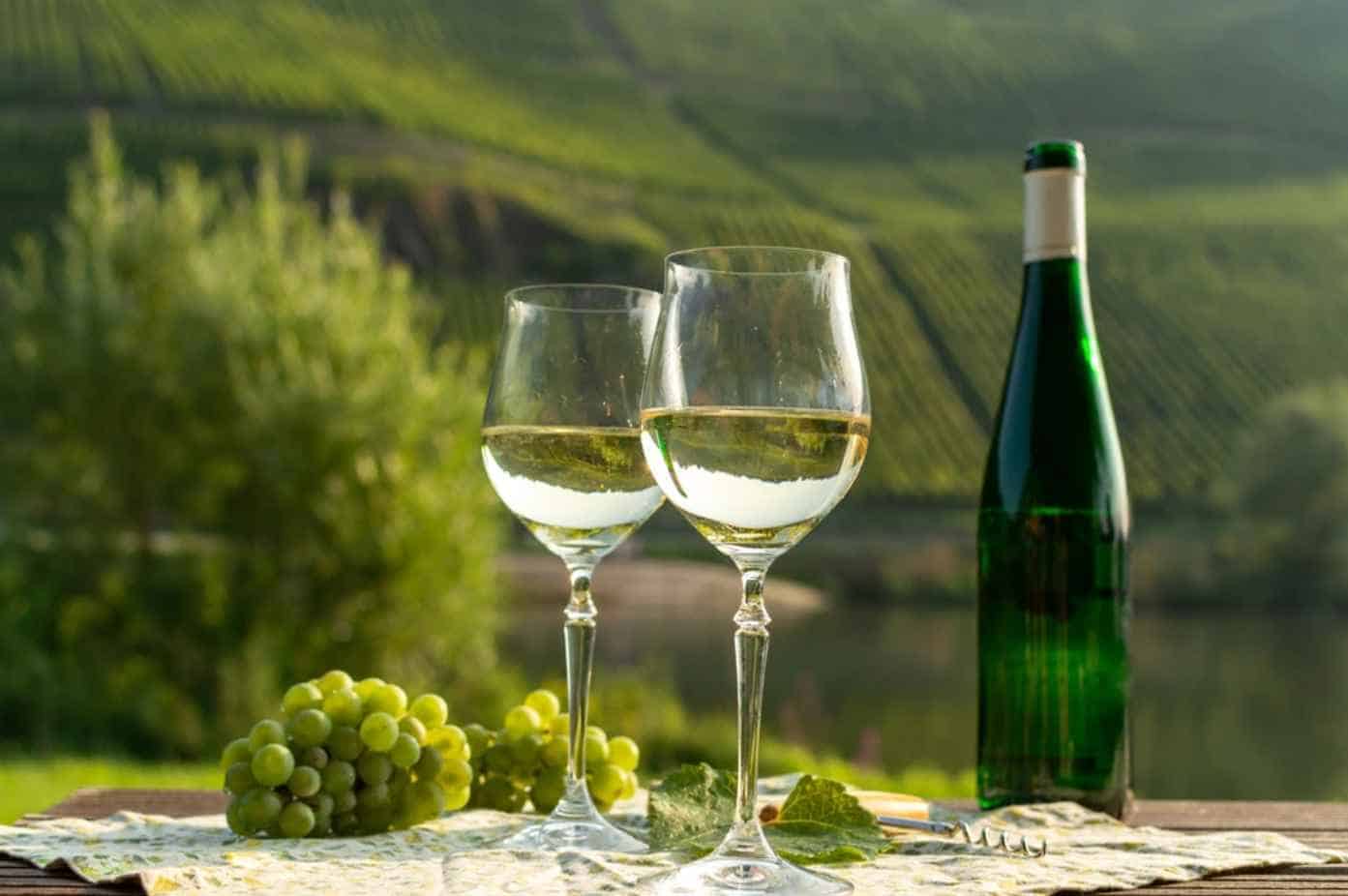
Even if you are a person who is not into wine, you would very much hear the word Chardonnay when the topic of wine comes up. This is very common as Chardonnay is the world’s most popular white wine. Of course, Chardonnay has earned this title for its characteristics.
For Chardonnay, grapes with green skins are used in its production. These types of grapes are very adaptable and can thrive in growing conditions. Another advantage of this type of grape is its ability to yield versatile wines at a wide range of pricing points.
Chardonnay is one of the types of wine that winemakers favor. Of course, this is due to many reasons, a few of which include its adaptability and neutrality.
Because of these features, terroir and the usage of oak barrels efficiently contributes to the flavor of the wine. As a result, it may be crafted into a diverse range of styles, from sparkling and crisp to creamy, buttery, and rich.
Like the production of other varieties of wine, the process starts in the vineyard, specifically harvesting, pressing, and fermentation. If the fermentation process is cut off before it’s finished, the resulting drink will contain more sugar left over, and the finished product will be sweeter.
On the other hand, if the winemaker allows fermentation to go on naturally until it’s done, the finished product will be drier and have less sugar. Since the production of Chardonnay wine follows the latter, this wine is inherently drier and far less sweet than other varieties.
Chardonnay is just a perfect addition to your event or dining experiences. It’s a great wine to pair with many dishes, too, so you might want to add it to your menu the next time you plan on eating out or preparing a nice dinner at home.
Breaking Down The Taste of Chardonnay
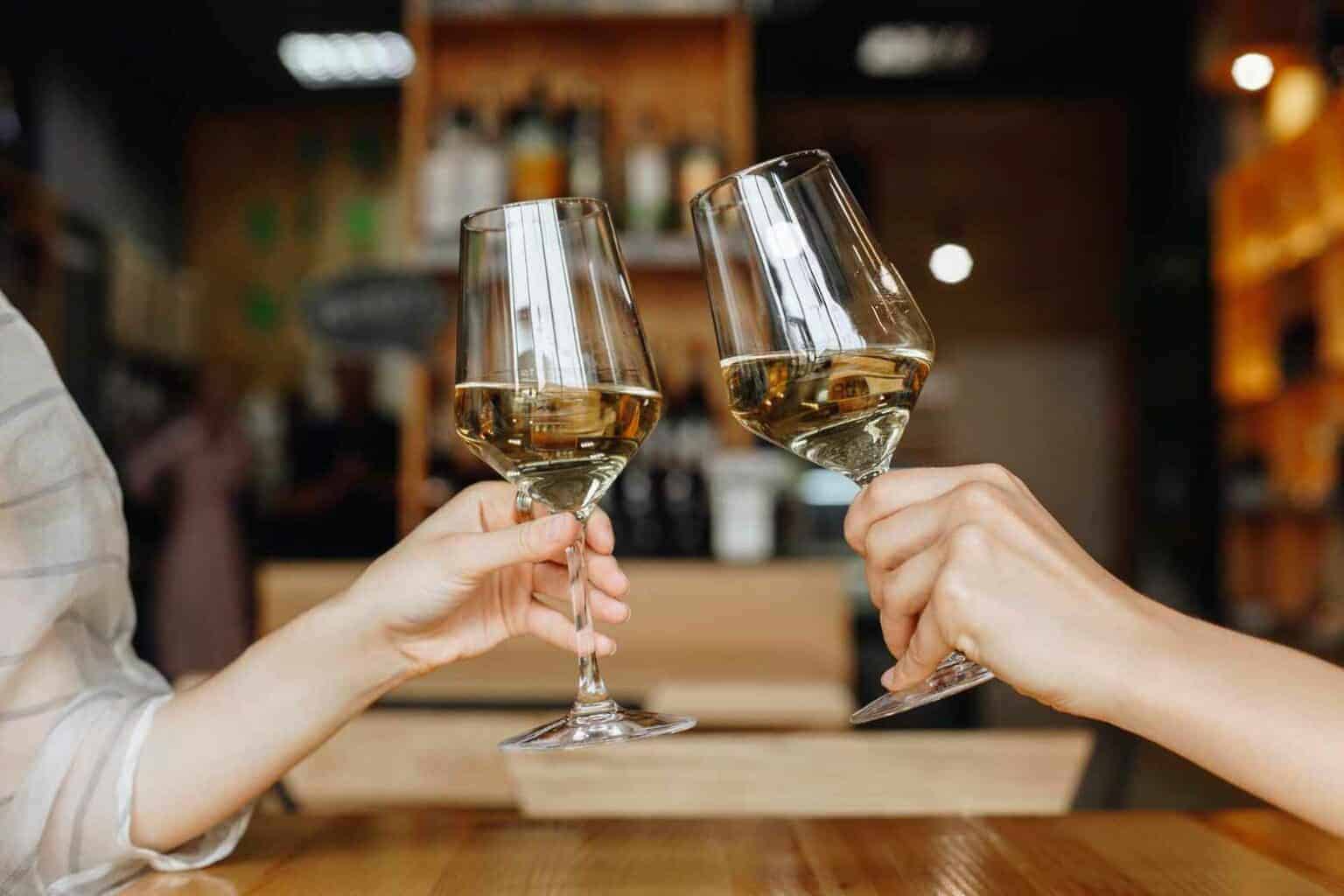
Considering the different environments in which Chardonnay is grown, there will be a difference in the minute notes in the flavor or so. Every component is essential; the soil it’s grown in and the techniques used to make the wine matter.
Chardonnay might have a svelte, acidic profile or a round, buttery one. Temperature is also an essential point in growing wine. Red wines grown and made in cooler places tend to be lighter and brighter, while red wines with grapes grown in warmer regions tend to be fuller and fruitier.
Chardonnay has a lot of flavors, but if you take a sip and examine its taste, you can spot some dominant notes. Some of these includes:
- Apple (Yellow Apple)
- Pear
- Pineapple
- Lemon
- Butter
- Vanilla
- Starfruit
- Apricot
- Papaya
- Some floral notes
The strength of these notes is easily altered in certain situations. One is when there is a process shift or an additional touch implemented by the winemaker. In other types of Chardonnay wine, some notes are completely overridden and replaced by more pungent notes.
As for wine aged in wood or through malolactic fermentation, notes of butter and toast can be produced. These notes, however, are not often easily distinguishable from the flavors that are naturally present in grapes.
Chardonnay Wine Serving
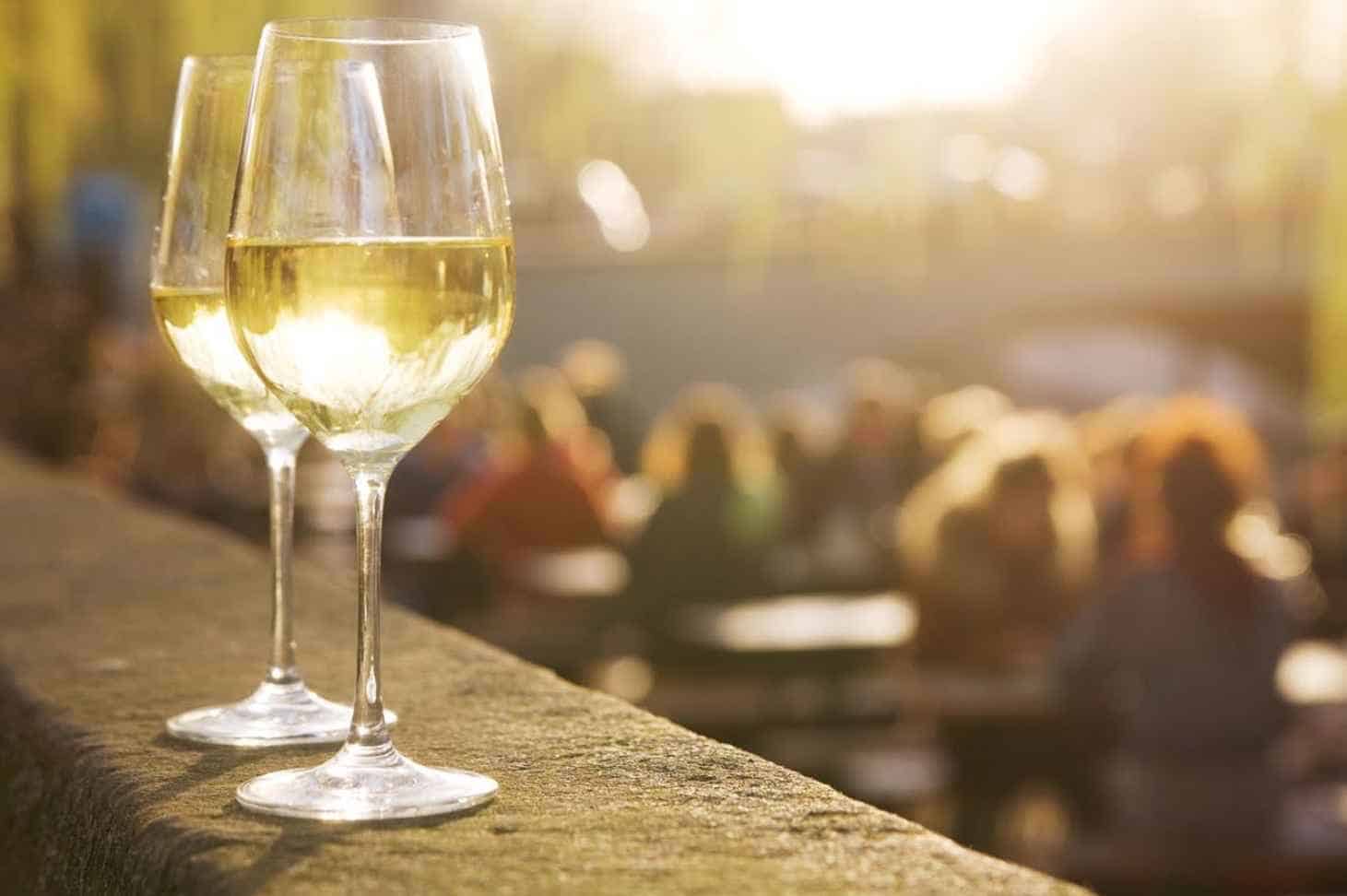
Wine serving is quite challenging to master, but it is achievable by following a sequence of fundamental procedures and practicing it consistently over time.
As for the amount of serving, the recommended amount of Chardonnay for a single serving is five ounces. For this, you would only need to fill the glass up to a point immediately below its broadest.
One bottle of 750 milliliters (mL) typically generates five glasses of wine. These glasses are, in turn, holding five fluid ounces each. If the event does not require heavy drinking, you will need a couple of bottles, depending on how long your event will last.
Every visitor can consume half a bottle of wine per hour, depending on their mood. There’s always someone who likes wine better than everybody else and consumes much more than half. To be safe, you might need to prepare a bottle each hour for every two visitors.
Stemware
Pouring white wine from large-format bottles will add an extra element of drama to your service. While one might think that glasses have nothing to do with the wine’s flavor, this is wrong. Champagne’s flavor can be improved by serving it in glasses made of fine crystal.
You might want to think about getting bowls that are completely transparent and have very fine rims. These bowls are estimated to carry 10- 18 ounces of liquid. If you choose a more transparent glass, the color of the wine will be more accurately represented.
Thus, increasing the level of visual enjoyment for your experience. Chardonnay’s aroma and taste are better expressed when served in wine glasses of a larger size. Larger glasses allow the wine to aerate better, maximizing the drinking experience.
Chardonnay Wine Pairings
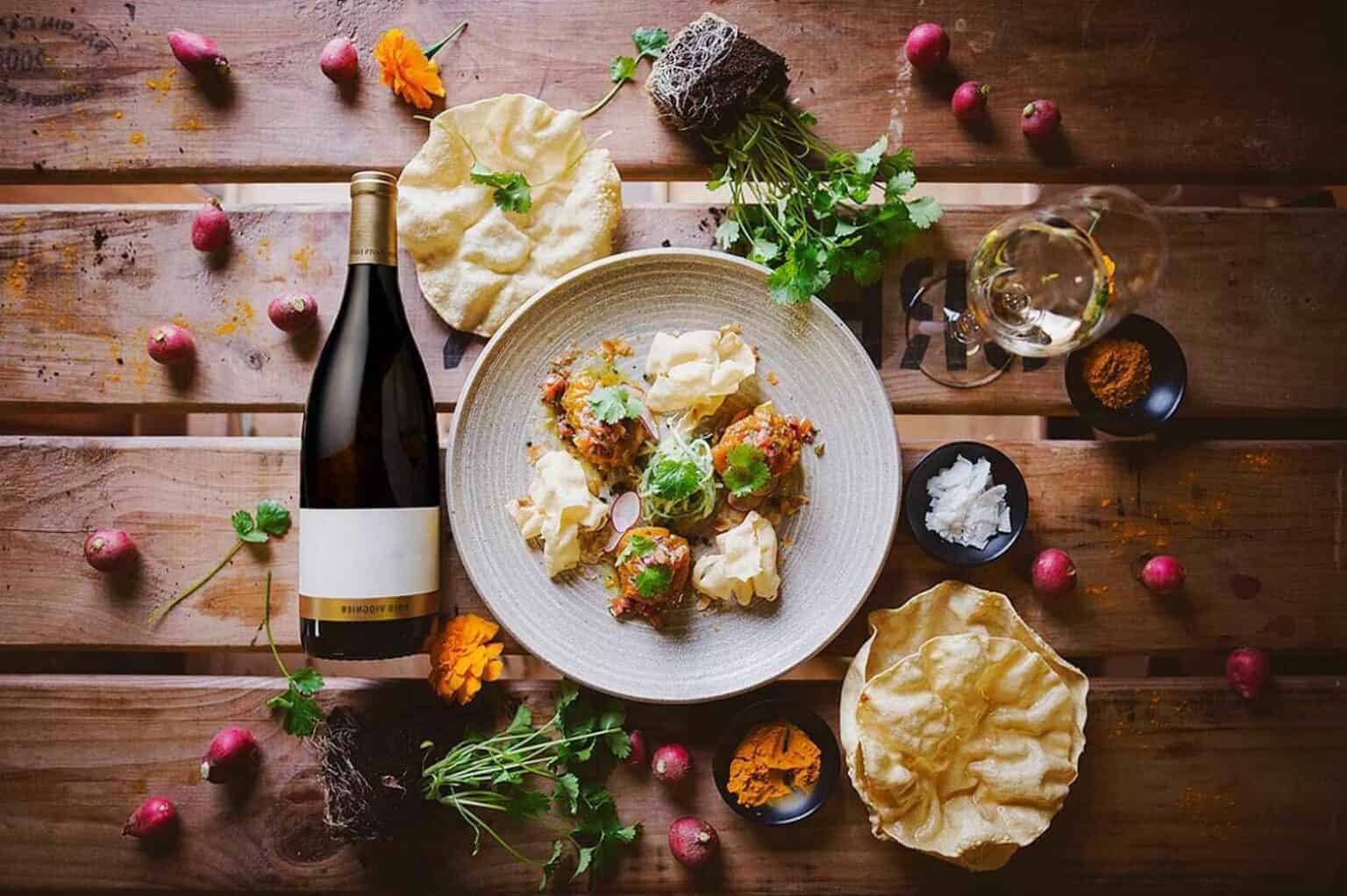
One thing that elevates a celebration is the dishes you pair with your Chardonnay. Because food also has distinct flavors, it’s essential to find the right pairings.
Some dishes are not ideal if you have Chardonnay because these types of food will overpower the wine’s flavors, or the flavors could clash inside your mouth, and you’ll miss the fun of food and wine consumption. Here are some of the best foods to pair with Chardonnay.
Unoaked Chardonnay + Sushi
When selecting a white wine to pair with sushi, you should look for one that ranges from light to medium in the body.
Chardonnay is the type of wine that best exemplifies these qualities, making it an excellent option for drinking sushi. The wine complements the delicate texture of the sushi, which, taken as a whole, is an absolute treat for the taste senses.
Chardonnay + Fried or smoked oyster
While raw oysters are not the best pair for Chardonnay, smoked and fried oysters sure are! Chardonnay with fried and smoked oysters makes for a mouthwatering combo.
The combination of the creamy dipping sauce that comes with cooked oysters makes the pairing even better. The creamy bite of the seafood melts in your mouth, and so do the creamy notes of Chardonnay refreshing your taste buds.
Halibut with cream sauce + Chardonnay or unoaked Chardonnay
This is an unusual pairing, but it works very well together. The bright acidity of the wine combined with the smooth texture of the sauce will produce a mouthwatering and satisfying meal.
Rice Pudding + Chardonnay
As for dessert, one of the best pairs for Chardonnay is rice pudding. Chardonnay is an excellent complement to this smooth and relaxing dish, which hints at vanilla’s signature sweetness. Adding tropical fruits is another fantastic addition that works well with this combo.
Hazelnuts + Crisp Chardonnay
Because of their unique flavor and scent, hazelnuts are a great food to pair with a Chardonnay, especially types with a bit of acidity. The toasty flavor of the nuts complements the flavors of the wine very well and creates an enchanting sensation in the mouth.
Chardonnay Wine: Fun Facts and FAQs
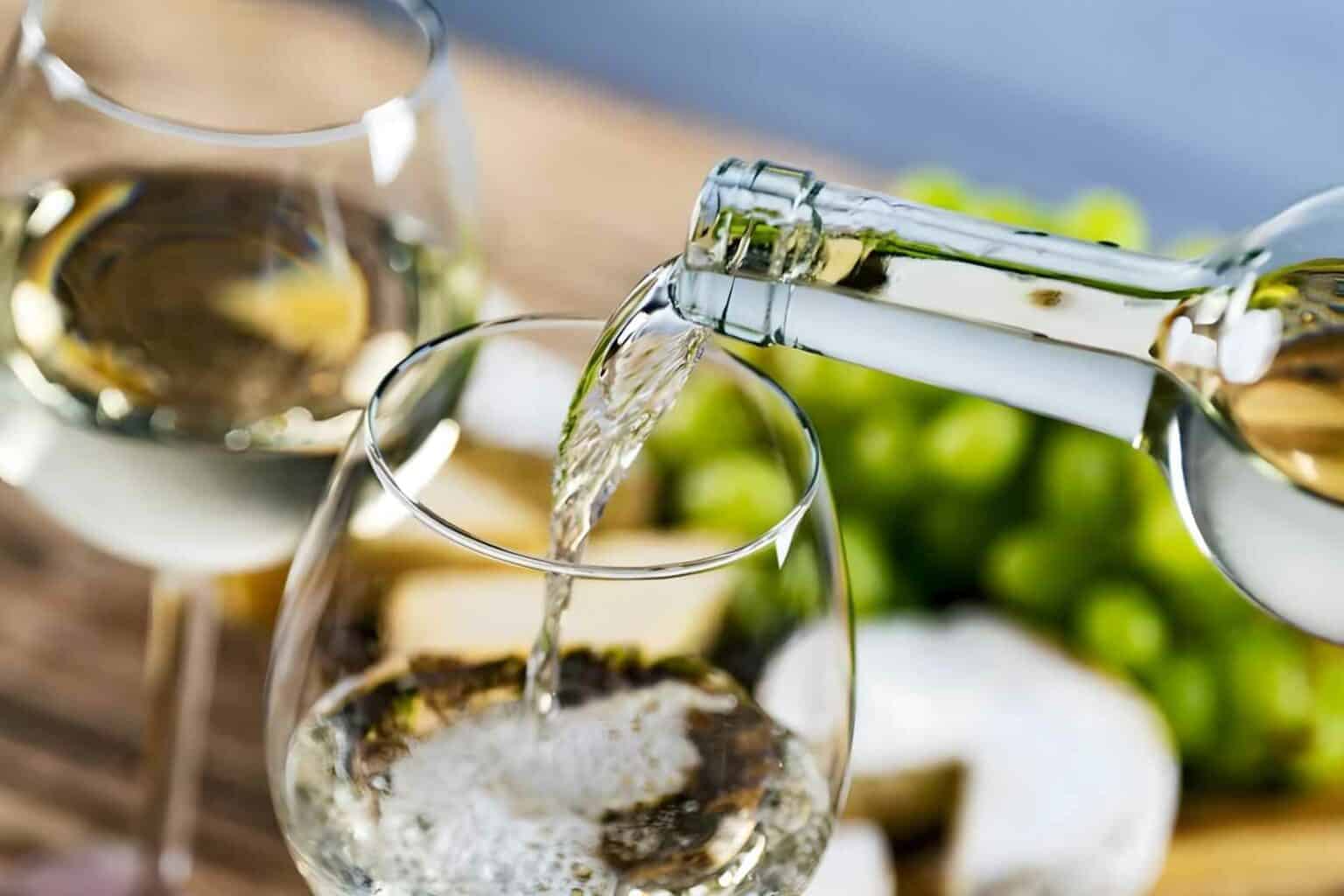
Fun facts
- Chardonnay has overtaken all other white grapes as the most extensively grown varietal in the world.
- The word Chardonnay is from a little Hamlet in France called Chardonnay. The word also means place of thistles.
- Chardonnay is sometimes referred to as a wine primarily created in a winery. This is because the winemaking process imparts the wine’s significant flavors.
- While wines from Chablis and other chilly regions often display lively acidity, this is not true for the grapes. The grapes’ acidity level is low, contrary to popular belief.
FAQs
At what temperature should Chardonnay be served?
Chardonnay is finest when served at a temperature that maximizes the wine’s aromatics and flavor. Serve your Chardonnay between 53 and 58 degrees. An easy hack is to chill the wine for 30 to 60 minutes before it hits the event.
How to properly store Chardonnay?
The flavor of an opened bottle of Chardonnay wine can be preserved in the refrigerator for one to two days. Once the bottle has been opened, you can extend its shelf life using a wine preserver.
What is Chardonnay’s aging process?
The naturally high acidity levels of Chardonnay make it an excellent candidate for aging, and this is especially true when it comes from cooler climates.
As the wine develops, the acidity fades away, and what sets are smoother and more subtle wines. It is usual practice to age wine in oak barrels, but doing so is very much optional. You can also age Chardonnay in stone or steel tanks.
Summary
Wines are some of the most well-known and exciting drinks available in the market. It is also one of the most well-loved and enjoyed. And so, as you dive deeper, you will come across the question, “What is a Chardonnay wine?” This guide can help you get acquainted and know the basics of this alluring white wine.


George Moore, co-founder of Wine Flavor Guru, is a charismatic entrepreneur with a rich background in California’s wine industry. Alongside Sylvia, he transformed a Sonoma County vineyard into a source of premium wines. George’s expertise in sourcing exceptional grapes and his approachable style make wine appreciation both accessible and engaging.
